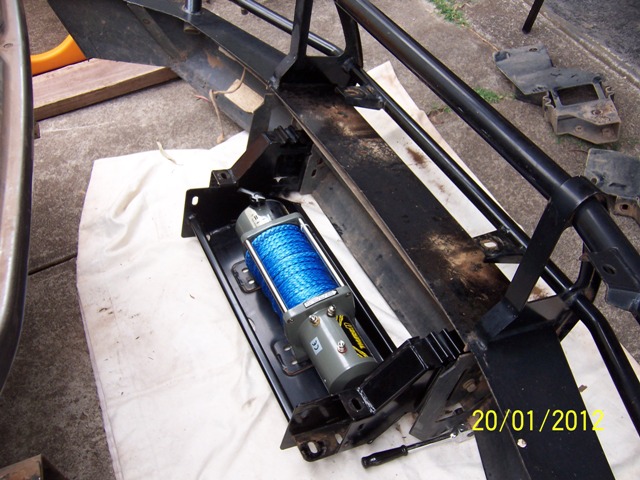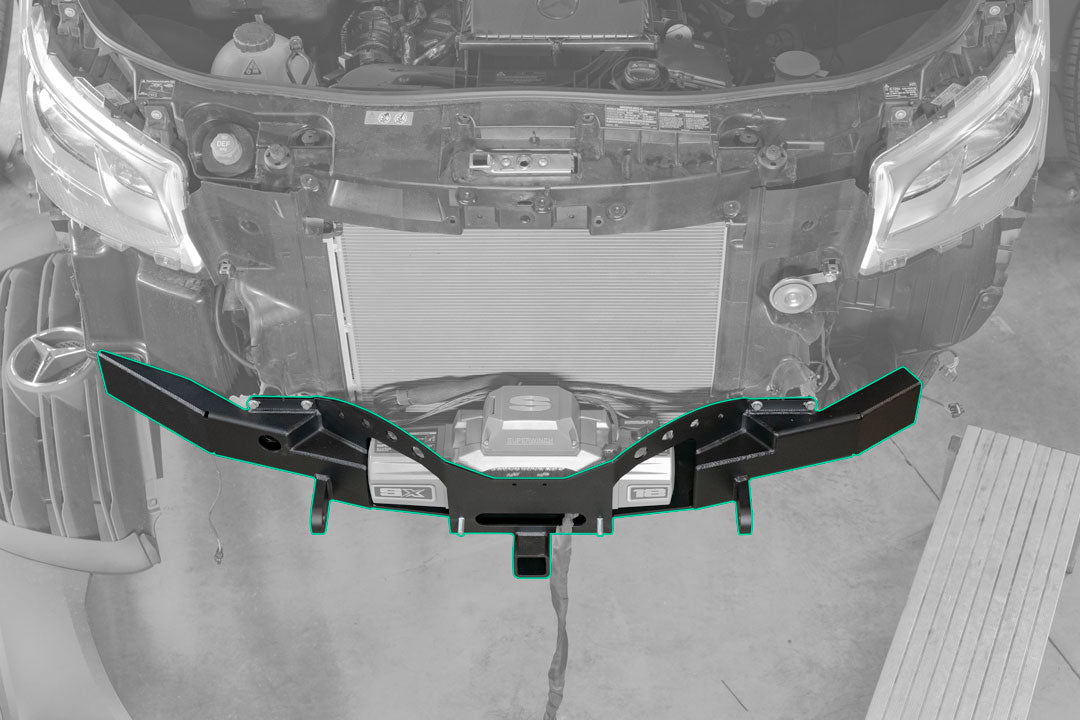Attaching a winch to a bull bar can seem tricky at first. But with the right steps, it becomes easy.
A winch is a valuable tool for off-road adventures and tough situations. It helps pull your vehicle out of mud or over obstacles. Connecting it to a bull bar adds strength and stability. This guide will show you how to do it safely and correctly.
With proper attachment, your winch will be reliable when you need it most. Let’s dive into the process and make sure your off-road experiences are smooth and secure.

Credit: www.amazon.com
Choosing The Right Winch
Choosing the correct winch capacity is very important. A winch should handle at least 1.5 times the weight of your vehicle. This ensures you can pull your vehicle out of tough spots. Always check the winch’s weight rating. It should match your vehicle’s requirements.
There are different types of winches. Electric winches are common and easy to use. They get power from the vehicle’s battery. Hydraulic winches use the vehicle’s power steering pump. They work well in wet conditions. Choose the type that suits your needs best.

Credit: 4x4earth.com
Selecting A Compatible Bull Bar
A strong bull bar is essential. It should be made of steel or aluminum. Steel is stronger but heavier. Aluminum is lighter but can be less durable. Choose based on your needs. Off-road use demands strength.
Check the bull bar for mounting points. They need to fit your vehicle. Ensure they are sturdy. Weak mounting points can be dangerous. The winch must be secure.
Gathering Necessary Tools
Gather essential tools like wrenches, sockets, and a drill before attaching a winch to a bull bar. Ensure all items are within easy reach to streamline the process.
Basic Tools Needed
Start with a wrench set. You will need sockets too. A drill is important. Get drill bits of different sizes. Screwdrivers are a must. Both flathead and Phillips. A tape measure helps. Do not forget safety gloves. And safety glasses.
Specialized Equipment
A winch mounting plate is key. Winch cables are needed. A snatch block can be useful. D-shackles help in securing. A winch hook is vital. Electrical connectors will be needed. Circuit breakers are crucial. Cable ties keep things neat. Anti-seize lubricant helps in assembly.

Credit: vancompass.com
Preparing The Vehicle
Park the vehicle on level ground. Engage the parking brake. Ensure the vehicle is in park or gear. This keeps it from moving. Turn off the engine. Open the hood to access the battery. Disconnect the battery to prevent shocks. Clear the area of obstacles. This provides a safe working space.
Use wheel chocks to block the wheels. This prevents rolling. Check the ground for stability. Soft ground can cause sinking. Place a wooden board under the jack. This gives extra support. Use a jack to lift the vehicle slightly. This helps in attaching the winch.
Mounting The Winch
Place the winch on the bull bar. Ensure it is centered. Check that it is straight. Adjust as needed. Use a level if available. The winch must be even. This makes it work better. A crooked winch can cause problems. Take your time here. Proper alignment is key.
Select the right bolts for the job. They should fit well. Insert bolts through the winch holes. Fasten them to the bull bar. Use a wrench to tighten. Make sure all bolts are secure. Check each one twice. Loose bolts are dangerous. Tight bolts keep the winch in place. Safety first.
Wiring The Winch
Attach a winch to a bull bar by bolting the mounting plate securely. Next, connect the winch to the plate. Finally, ensure all bolts are tight and wiring is correctly installed for safe operation.
Connecting To The Battery
First, find the battery in your vehicle. Identify the positive and negative terminals. Attach the positive wire of the winch to the positive terminal. Use a wrench to tighten the connection. Now, connect the negative wire to the negative terminal. Ensure both connections are secure. Check for any loose wires. Remember to keep the wires away from hot parts.
Routing The Wires
Route the wires from the winch to the battery. Avoid sharp edges to prevent damage. Use zip ties to secure the wires along the frame. Keep the wires away from moving parts. This helps avoid wear and tear. Make sure there is no slack in the wires. Test the winch to ensure it works properly.
Testing The Installation
Check that the winch works as it should. Test the remote control. Make sure the cable moves smoothly. Pull a small weight. See if the motor makes any strange sounds. Ensure the hooks are secure. Check if the winch pulls the weight without issues. Inspect the cable for any damage. Look for loose connections.
Winch not working? Check the battery. Make sure it is fully charged. Inspect the wiring. Look for any loose wires. Check the fuse. Replace if it’s blown. Cable stuck? Ensure it’s not tangled. Motor noisy? Check for debris. Clean the gears if needed. Hooks loose? Tighten them properly.
Maintenance Tips
Inspect the winch and bull bar often. Look for any signs of wear. Check bolts and nuts to ensure they are tight. Look for rust or damage. Replace any worn parts quickly. This keeps your winch safe and ready to use.
Clean the winch after each use. Dirt can cause problems. Use a soft brush to remove dirt. Apply lubricant to the moving parts. This helps them work smoothly. Avoid using too much lubricant. It can attract more dirt.
Conclusion
Attaching a winch to a bull bar can seem hard at first. But with the right tools and steps, it’s doable. Start with a good plan and follow safety guidelines. Make sure to check all connections twice for safety. A secure winch setup helps in tough situations.
Now, you can tackle off-road adventures with ease. Enjoy the freedom and confidence a winch brings. Happy off-roading!
